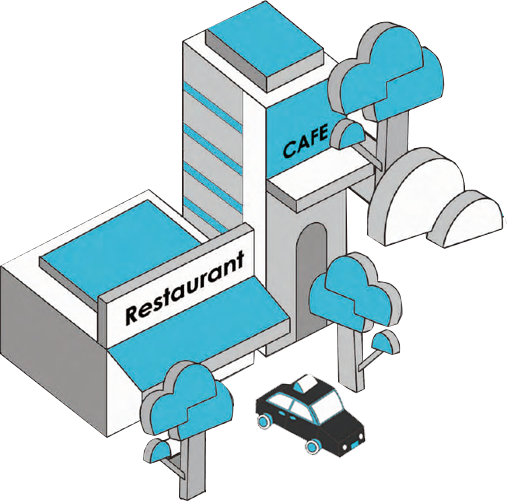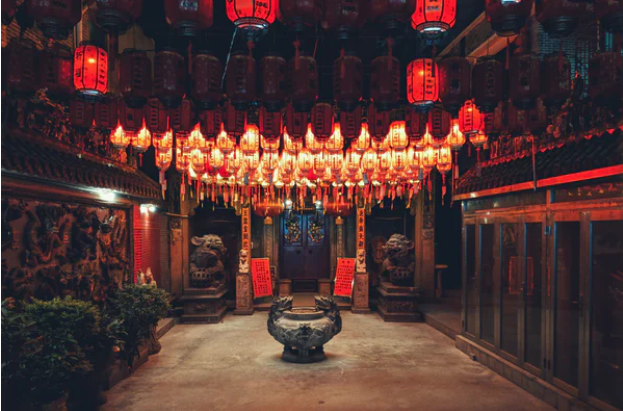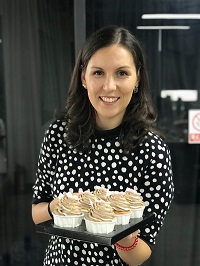Although Shenzhen is renowned for its technological and economic development, the city has also gradually gained recognition (both domestically and abroad) as a " Design City" with a booming "culture and creativity" scene.
The bilingual Discovery Route featuring '* culture and creativity" was designed to educate the public about the development of Shenzhen' s culture and arts industry. Participants following this route can learn more about Shenzhen in a fun and innovative manner. This Discovery Route was designed to enhance a sense of belonging to the city, while increasing attention on Shenzhen' s rapidly expanding M Culture and Creativity" landscape.
Selected sites:
Sea World Culture and Arts Center
Sea World Culture and Arts Center, located in Shekou Sea World — an expatriate hub in Shenzhen — features several top-class exhibition halls for culture and arts, and aims to be the next visionary site for the spread of the arts and culture globally.
G&G Creative Community
An experiential and industrial creative design center focusing on the exploration of new lifestyles, the G&G Creative Community is a creative destination and content incubator driven by a shared economy. The many new commercial arts initiatives that the community has kick-started include: ING Market, ING Creative Space, ING Street, Crazy Grass Festival and Creative Forum.
Hua Art Museum
Hua Art Museum is the country' s first design-themed art museum, and its exterior is shaped like a beehive. Along with the He Xiangning Art Museum and OCT Contemporary Art Terminal, it forms the "Art TriangleH in the Overseas Chinese Town. The museum also houses an art salon, which serves as a comprehensive engagement platform for art lovers.
He Xiangning Art Museum
Located in the Overseas Chinese Town in Shenzhen, the museum first opened its doors April 18, 1997. With the inscription of its name handwritten by Jiang Zeming, it is the first national art museum named after an individual. A prestigious institution in Chinese art and academia, and for society at large, the museum is currently extending its influence to the global stage.
MixC
Located in Nanshan District, MixC integrates cafes, food and shopping into one, incorporating innovative, cultural and humanities-related fashion, art and social elements. Offering an " all-new leisurely urban creative space," the mall has become a popular hit for social media influencers
Block Sixteen
Block Sixteen is a creative park located at 16 Gaoxin North 6th Road, Shenzhen High-Tech Park, hence its name. The park explores and creates prototype street zones for lifestyles of the future, with a focus on the culture, creation and technology industries. Arts and entertainment events, such as concerts, forums and book clubs, are frequently held in the park.
OCT-LOFT
OCT-LOFT takes its name from the renovated factory buildings on which it is based. Combining creativity, design and art, the park is shaping up to be a landmark area in Shenzhen and a new open community for cultural industries, serving as a hub for arts events and Shenzhen's hipsters.
Shenzhen Museum of Contemporary Art and Urban Planning
The Shenzhen Museum of Contemporary Art and Urban Planning was designed by "deconstructivism pioneer" Coop Himmelb(l)au. As the new landmark for culture and the arts in Shenzhen's Futian District, the museum functions both as a site for cultural exchange and architectural exhibitions under one roof.
Shum Yip Upperhills
Located in the center of Futian District and surrounded by three major central parks, it is connected to the Lotus Hill and Bijiashan parks by a sightseeing bridge. Shum Yip Upperhills is a leader in the concept of " high-end quality living," focusing on creative design and product innovation.
Guan Shanyue Art Museum
Guan Shanyue Art Museum is a national art museum named by the artist Guan Shanyue, which was built in 1995.
Shenzhen Grand Theater
Built in 1984, Shenzhen Grand Theater was the first building in China to introduce a stage design shaped after the character "pin," and was built using advanced mechanical equipment sourced from abroad. It has since become a progressive symbol for modern theater architecture in China, marking the beginning of the a Era of the Grand Theaters."
Dafen Oil Painting Village
The oil painting industry of Dafen Village traces its roots back to 1989. Today's Dafen Village is the biggest production and trading base for commercial oil painting in the country, and an important oil painting distribution center for the world. It is the creative cultural industry area that is most representative of Shenzhen and attracts a large number of visitors.
Shangwei Art Village
Shangwei Art Village is an urban village cultural project with a government-built platform serving as a performance space for traditional opera artists. It was transformed from an old, dilapidated and rubbish-filled village that was unsuitable for living into an ecological base for the arts that blends artistic reinvention with environmental management.
Guanlan
Guanlan is the hometown of China's first-generation printmaking artist Chen Yanqiao. Converted from a 300-year-old Hakka village, the Guanlan Original Industry Base for Printmaking is an ideal and peaceful place much-loved by artists. It combines print art creation and printmaking, with print art exhibition, collection, exchange, research, training and market development, all in one space.
New Who Art Village
New Who Art Village is a century-old Hakka village in Longhua District. In 2012, a group of artists came and started exploring the village as an artistic base for creative work, which evolved into the Aohu Art Village of today. Featuring the Aohu Art Museum, Courtyard of the Arts, Diaolou Theater and specialty shops, the village embraces artists, local residents, visitors and large numbers of tourists.




















